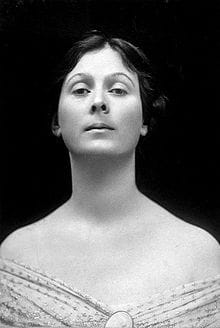- The Orange County Newsletter
- Posts
- Orange County Newsletter (June 3rd)
Orange County Newsletter (June 3rd)
Your news, upcoming events, AI art, historical facts and more!

Welcome to The Orange County Newsletter!
In today’s edition:
Upcoming Ronnie Carrier performance
All-Orange Girls Volleyball Team, Top Coach.
A deep-dive into the life of Jessamyn West
And more…
Quote of the Week
"The only thing necessary for the triumph of evil is for good men to do nothing."
- Edmund Burke
Trivia
Here is your trivia question of the week. The answer will be shown in next week’s newsletter. Which do you think it is? No cheating!
What Orange County city is recognized for its significant contribution to the aerospace industry, historically housing manufacturers and aerospace companies?
A) Huntington Beach
B) Irvine
C) Costa Mesa
D) Seal Beach
Answer to Week 17's Trivia:
The "Fullerton Arboretum" is a botanical garden located on the campus of C) California State University, Fullerton.
News
💼 Business
Terran Orbital Getting New CFO, COO. (link)
Orange County's tourist tax collections break records. Here's what the money is used for and why. (link)
Aeon Biopharma to Slash Workforce in Half. (link)
🏒 Sports
Wild pitch in ninth helps South beat North in Orange County All-Star Baseball Game. (link)
All-Orange County girls beach volleyball team plus players and coach of the year. (link)
Services set for longtime sports official ‘Speed’ Castillo. (link)
🏦 Finance
More Orange County Cities Overhaul Campaign Finance Rules. (link)
Evolus' Sandra Beaver Named Orange County Business Journal's Public Company CFO of the Year. (link)
Orange County bus drivers to get raises. (link)
Upcoming Events
Here are some events that are happening in our city this week. There is a good mix between sports, entertainment, conferences, concerts, and more.
Sports
🏊🏻 The Athletic ACL: A Framework for Rehab to Return to Sport
Costa Mesa 2925 Airway Avenue Costa Mesa, CA
June 8th, 8am | June 9th, 5pm | (More info)
🏓 TTC - Paddles Up Pickleball Camps
11 Clubhouse Drive Newport Beach, CA
Saturday, June 8th | 11am - 2pm | (More Info)
🏋 Fit, Fame and Fortune
12681 Harbor Boulevard Garden Grove, CA
Friday, June 7th | 9am - 7pm | (More Info)
⚾ WIFFLE Ball Tournament
400 E Hermosa Dr Fullerton, CA
Saturday, June 8th | 8am - 5pm | (More info)
Music & Concerts
🎤 Ronnie Carrier
Pour Company 136 W Wilshire Ave Fullerton, CA
Monday, Jun 3rd | 6:00 PM | (More Info)
🎶Joe Melendrez
Poverello of Assisi Retreat 1519 Woodworth St San Fernando, CA
Tuesday, Jun 4th | 8:30 AM | (More Info)
🎸Georgia Maq
El Cid 4212 W Sunset Blvd Los Angeles, CA
Tuesday, Jun 4th | 6:00 PM | (More Info)
Family
☀️ Toddlers & Tunes at Irvine Spectrum Center
670 Spectrum Center Dr, Irvine, CA
Tuesday 4 June, 2024 at 10:00 am | (More Info)
🏛️ Pretend City Children’s museum
29 Hubble, Irvine, CA
Sunday 9 June, 2024 at 8:00 am | (More Info)
🌊“Seas the Day” Family Rave in Santa Ana
307 N Spurgeon St, Santa Ana, CA
Sunday 9 June, 2024 at 2:00 pm | (More Info)
Image of the Week
Every week, I have a habit of making some AI art about our city.
This week, I typed in “Orange County, CA streets with interactive, responsive surfaces” and this is what I got.
Let me know what ideas you have for this. I really enjoy making these types of photos.

Orange County Historical Events
Orange County's citrus industry decline (1950s-1960s) - Transition from agricultural to suburban development.
Orange County, California, once epitomized the idyllic, sun-soaked citrus grove landscape, marking its identity and economy with vast stretches of orange, lemon, and other citrus trees as far as the eye could see. During the early 20th century, the county was one of the largest producers of oranges in the United States, and its picturesque groves became symbolic of California's agricultural prosperity. But by the 1950s and 1960s, this iconic citrus industry began a steep decline, primarily driven by the post-World War II housing boom and the allure of suburban development. As veterans returned and the economy soared, the demand for suburban housing surged, gradually transforming the agricultural panorama into a quilt of residential neighborhoods.
The pivot from agriculture to suburban development in Orange County was fueled not just by housing demands but also by economic shifts that made suburban development more financially rewarding than citrus farming. The value of land for residential and commercial use far exceeded its value for agriculture, compelling many farmers to sell their lands to developers. This transition was accelerated by innovations in irrigation and pesticide use in other parts of the state and country, which increased competition and further reduced the profitability of Orange County's citrus operations. Moreover, the development of freeways and infrastructure improvements made the county more accessible, attracting a diverse population keen on the suburban lifestyle, thereby diminishing the rural agricultural character that had defined the region for so long.
By the late 1960s, the transformation was virtually complete, with only remnants of the once vast citrus groves remaining, primarily as historical landmarks rather than commercial enterprises. This shift not only altered the physical landscape but also the cultural and economic fabric of Orange County, propelling it toward a future dominated by suburban communities, business parks, and a burgeoning tourism industry centered around attractions like Disneyland. The decline of the citrus industry in Orange County is a poignant example of the broader trend of urbanization and economic change in mid-20th century America, reflecting the complex interplay between agriculture, economics, and urban development.
Famous People In Orange County History

Isadora Duncan: 1877-1927
Isadora Duncan stands as one of the most revolutionary figures in the history of dance, shattering conventional norms and introducing a form of expressive movement that resonated deeply with the early 20th-century zeitgeist. Her life, marked by both tragic and triumphant moments, was an enduring testament to her commitment to freedom of expression, both personally and artistically.
California Beginnings and an Artistic Soul Awakened (1877-1899)
Born in San Francisco, California, Duncan's early life was steeped in the classical arts, thanks to her mother's influence. From a young age, Duncan exhibited a strong inclination toward creating a new dance form, one that celebrated natural movement over the rigidity of ballet. Her vision was not just to dance but to express her innermost feelings and the deeper truths of humanity through movement.
Revolutionizing Dance in Europe (1900-1914)
Duncan's departure to Europe marked the beginning of her revolutionary impact on the dance world. In cities like Berlin, Paris, and London, she captivated audiences by rejecting balletic formality in favor of movements inspired by Greek art, nature, and personal emotion. Her performances were acclaimed for their unprecedented expressiveness and blend of scene, costume, and music, which all served to heighten emotional effect.
Tragic Personal Loss and Artistic Growth (1914-1919)
Despite her professional success, Duncan's personal life was fraught with tragedy. The most devastating blow came when her two children drowned in 1913. This loss plunged her into deep mourning, reflected in her subsequently more somber performances. Duncan's artistry, however, deepened, incorporating themes of sorrow and loss that resonated with audiences on an even more profound level.
Political Engagement and Controversy (1920-1924)
In the post-war years, Duncan’s attention turned increasingly toward the political, infused with a genuine belief in the power of dance to enact social change. Her visits to the Soviet Union and outspoken support for Soviet ideals, however, made her a controversial figure, particularly among American audiences. Yet, she remained unapologetic, seeing her political engagement as an extension of her art's fundamental truth-seeking.
The Dance School in Orange County (1924-1925)
Duncan's connection to Orange County, CA, came late in her life when she established a dance school there. Seeing it as an opportunity to impart her knowledge to a new generation, she devoted herself to teaching her technique and philosophy. The school, however, struggled financially, and Duncan's time in Orange County was marked by efforts to find footing for her radical dance ideology in an environment that was, perhaps, not quite ready for it.
Return to Europe and Final Years (1925-1927)
Ultimately, Duncan returned to Europe, where she continued to teach and perform until her untimely death in 1927. Her final years were characterized by ongoing financial difficulties and a waning public interest in her work. Nevertheless, Duncan remained until the end a passionate advocate for her vision of dance as a means of personal and cultural liberation.
Legacy of Dance Innovation (Post-1927)
Isadora Duncan’s influence on the world of dance cannot be overstated. She is often credited with inventing modern dance, introducing concepts and techniques that fundamentally altered the course of dance history. Her belief in the expression of natural movements led to the development of new forms of dance that prioritized emotional expressiveness over technical precision.
Key Achievements of Isadora Duncan:
Revolutionized the world of dance by introducing natural movements as the basis for expression.
Established several schools and dance groups in Europe and the USA, spreading her dance philosophy.
Performed across Europe, making a significant impact on the dance world and solidifying her status as an innovator.
Advocated for the role of dance in expressing human emotion and the deeper truths of existence, influencing generations of dancers and choreographers.
Despite personal and professional challenges, she persevered in her commitment to dance as an art form and means of personal liberation.
In summary, Isadora Duncan was a pioneering force in the world of dance, rejecting the confines of traditional ballet to introduce a form of movement that celebrated the human spirit's freedom and expressiveness. Her innovative approach, marked by personal tragedy and professional challenges, transformed the art of dance, leaving a legacy that continues to inspire and influence. Through her visionary work, she demonstrated the power of dance as a transformative and deeply expressive medium, making an indelible mark on the arts for generations to come.
Connect With Me
If you want to connect, reply to this email and let me know what you think.
I would love to hear from you. Don’t be shy.
-Matthew Larsen
Follow me on Instagram: https://instagram.com/matthewblarsen